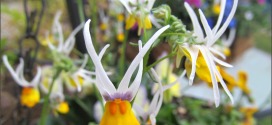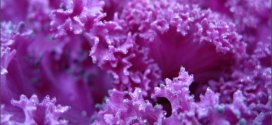tbd
Read More »admin
Sempervivium
Sempervivum /sɛmpəˈvaɪvəm/, is a genus of about 40 species of flowering plants in the Crassulaceae family, known as houseleeks. Other common names include liveforever and hen and chicks. They are succulent perennials forming mats composed of tufted leaves in rosettes. In favorable conditions they spread rapidly via offsets, and several species are valued in cultivation as groundcover for dry, sunny …
Read More »Celosia
Bright and bold, cockscomb (Celosia argenta) blooms from summer until early fall. The convoluted flower heads have a shape similar to cauliflower. These annual flowers look garish in the wrong setting, so plan your companion plants carefully. They make excellent cut flowers that last a long time in the vase. They also dry well and can be used in crafts. …
Read More »Chile – Pepperoncini
Peperoncini (or pepperoncini) are a variety of the species Capsicum annuum. The Greek varieties are sweeter and less bitter than the Italian varieties grown in Tuscany. Peperoncini are mild with a slight heat and a hint of bitterness, and are commonly pickled and sold packaged in jars. Peperoncini grow on a bushy plant that reaches 30 inches (77 cm) in …
Read More »Ornamental Cabbage
Ornamental cabbage and kale are in the same species, Brassica oleracea, as edible cabbages and kale. They are the result of hybridizing and, although they are still edible, they aren’t as tasty and tender as their cousins. Although sometimes referred to as flowering cabbages, it’s the leaves that give the plants their color and interest as ornamentals.
Read More »Jade plant
Jade Plant (aka Jade Tree, Money Tree) is a great landscape plant for the Sunnyvale garden. It is a succulent that needs little watering.
Read More »Dry-curing olives (Part 1)
In October 2015, I harvested around 4 gallons of Mission olives. Most of them I brine-cured. The ripe olives I am dry-curing using just coarse kosher salt. Why not use regular salt? Because dry-cured olives are very salty and regular table-salt contains iodine (to prevent iodine deficiency) and too much of a good thing is bad. I am dry-curing them …
Read More »Purslane
Common in our Sunnyvale yards but little known in the North American kitchen, purslane is both delicious and exceptionally nutritious. Common purslane (Portulaca oleracea) — also known as duckweed, fatweed, pursley, pussley, verdolagas and wild portulaca — is the most frequently reported “weed” species in the world. It can grow anywhere that has at least a two-month growing season. My …
Read More »Blood Flower – Aclepias curassavica
Blood flowers (Aclepias curassavica) are red-orange with yellow hoods. Flowering continues throughout the summer to early autumn. Hummingbirds, butterflies and bees are attracted to the flowers. Monarch butterflies lay eggs on this plant and the resulting larvae (caterpillars) use the plant leaves as a food source. Flowers are followed by long, narrow seed pods (3-4” long) which split open when …
Read More »Marionberries in October
Here it is Oct 8 and our Marionberry is still producing fruit. It had its usual big harvest in late June. Then a smaller harvest in August. And now there are still ripe berries. The Marionberry is a bright, glossy blackberry with medium to large fruit, somewhat longer than wide. It is special to the area because it is named …
Read More »








